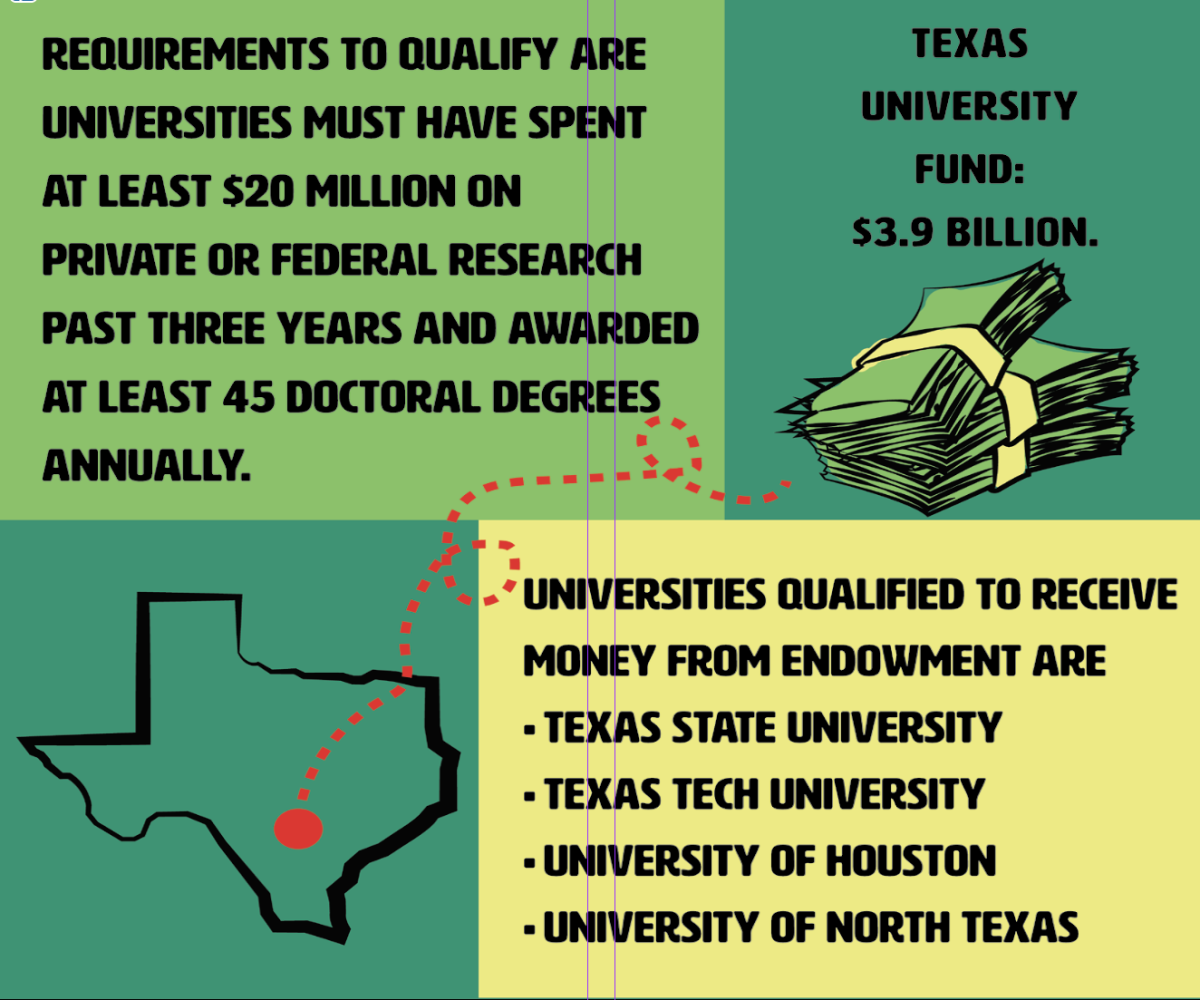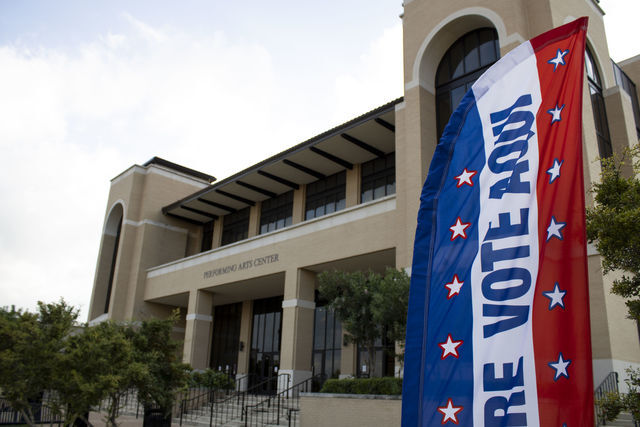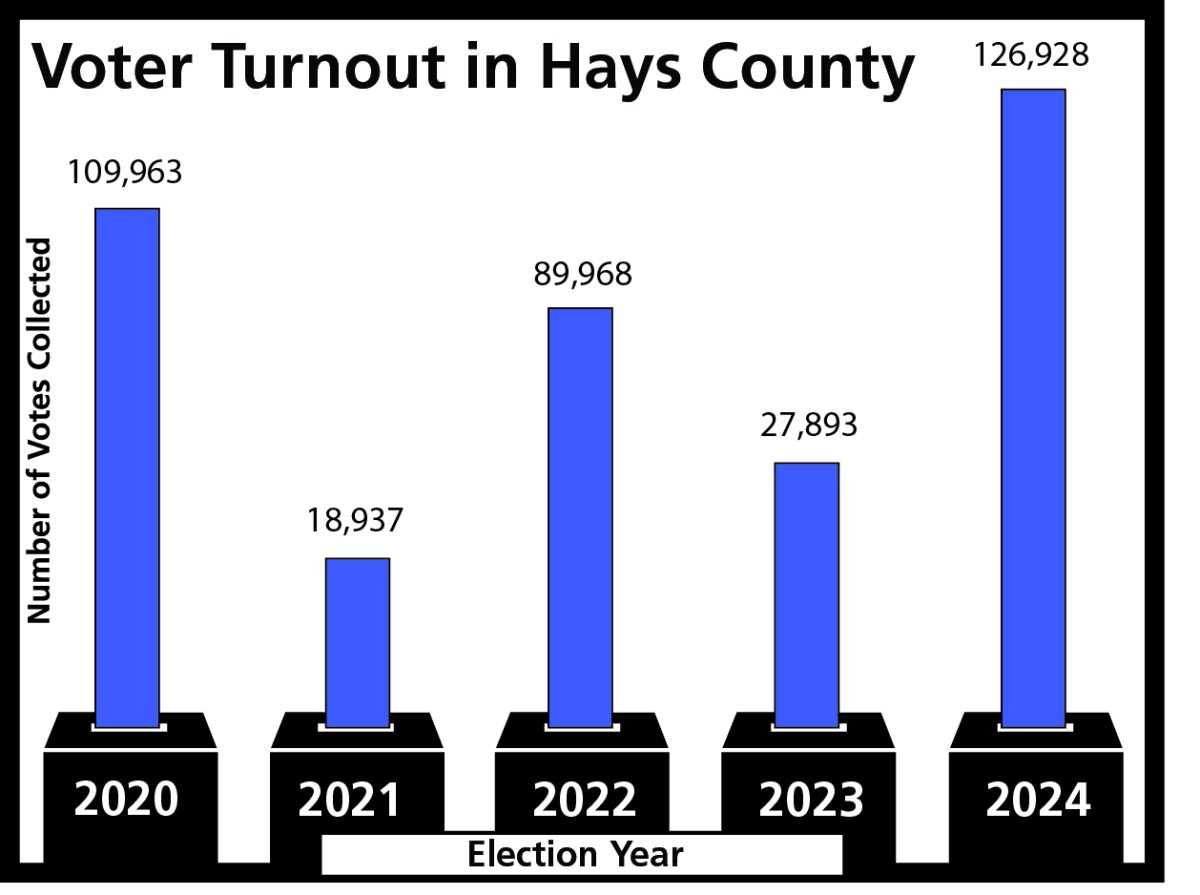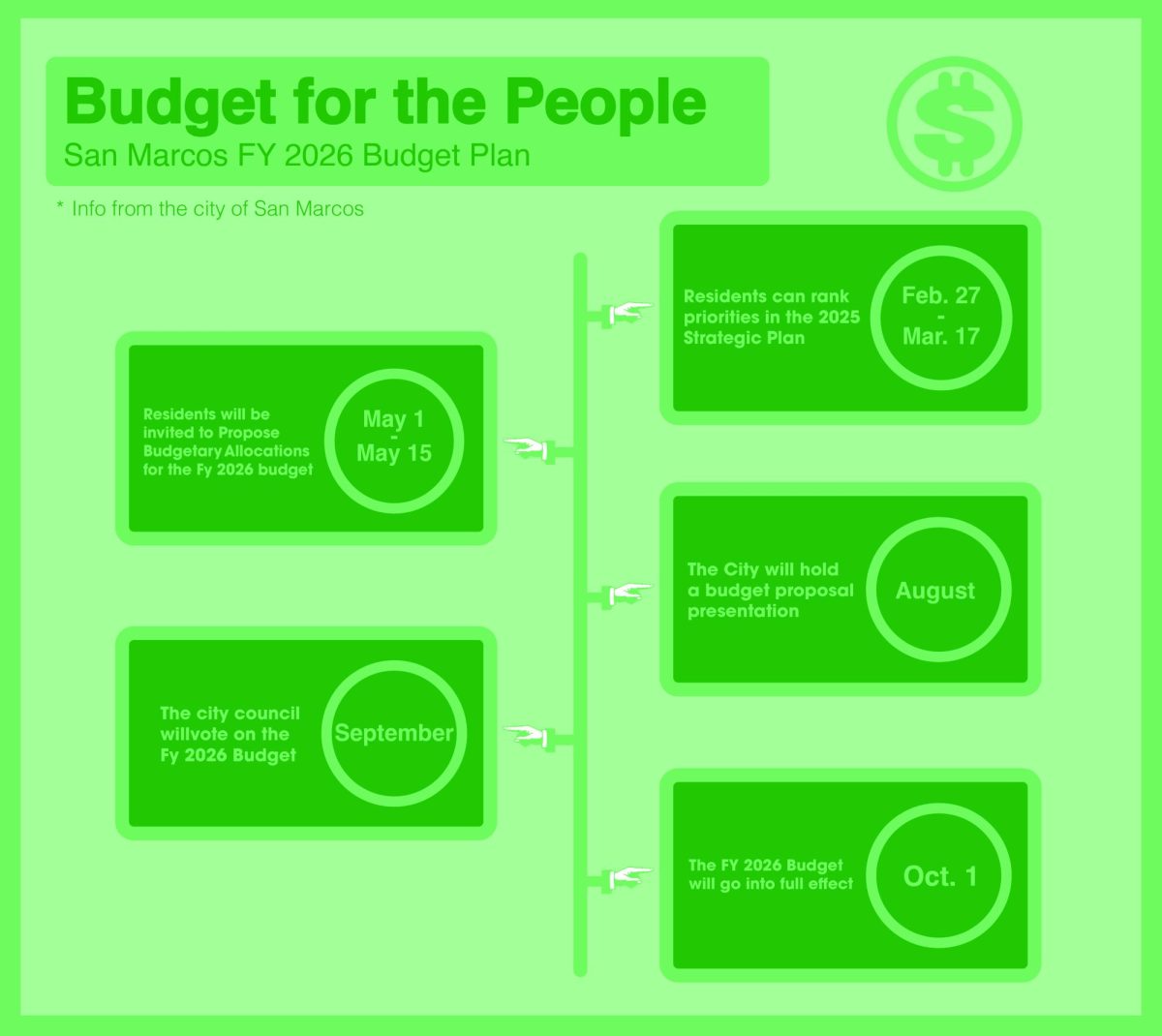Proposition 5 (Prop 5), a constitutional proposition being voted on this ballot, is a proposal to create a fund for upcoming tier-two research institutions such as Texas State.
The proposed Texas University Fund (TUF) would be a $3.5 billion dollar endowment for schools that have spent at least $20 million in private and federal research funds for at least three years in a row.
Nathan McDaniel, a lobbyist for Prop 5, said the proposition is a long time coming and will help Texas universities catch up with other states.
“The state of California has 10 tier-one institutions. The state of North Carolina has 3 in a one-hour drive of each other,” McDaniel said. “[This] means we are behind and [Prop 5] is a step in the right direction.”
The fund is a reorganization and expansion of the previous National Research University Fund with additional funding from the state’s “rainy day” fund and a one-time allotment of $3 billion from the state’s budget surplus. Because the money is from existing accounts, Prop 5 will not create any more taxes.
“These [surplus] dollars come from sales tax, property tax and online shopping during COVID-19,” McDaniel said. “[During COVID-19], tax revenue went through the roof.”
According to McDaniel, Texas State, one of the qualifying universities, would receive an additional $40 million per year for research-specific activities.
This bill comes as Texas State works to achieve tier-one status by 2027. An institution’s research rank is determined by the Carnegie classifications of research institutions which defines tier-one institutions by various categories. Tier-one research universities are “the highest possible rank among research universities,” meaning they spend $50 million on research and award at least 70 research doctorates annually.
Universities such as University of Texas at Austin and Texas A&M both fall under the classification of tier-one.
Texas State, however, is currently a tier-two research institution, meaning it only spends $5 million in annual research and awards at least 20 doctorates annually.
According to The Texas Tribune, Texas State would split the funds with three other institutions: “Texas Tech [receving] $44 million in the first year; UH [receving] $48 million and UNT [receving] $21 million.” TUF, while starting as a $3.9 billion dollar endowment, would receive an additional $100 million annually from interest coming from the rainy day fund.
According to McDaniel, there are limits to how the funds could be spent.
“[TUF funds] would have restricted funding,” McDaniel said. “It can only be used for research activity, whether they are doing research in the lab, recruiting professions, obtaining grants.”
Funding from TUF would go toward the establishment of new Ph.D. programs and towards the expansion of current research activities such as the STAR park complex.
Some groups, such as the Texas State Employees Union (TSEU), would like to see these funds directly reinvested into the facility. TSEU is currently asking for the Texas State administration to use the possible funds from Prop 5 for wage increases and for the hiring of additional staff and faculty.
“I am all on board with us becoming a tier-one institution,” Thomas Edgar, a representative of TSEU, said. “[But] if you’re going to be R1 you need [more] people, it’s more work. Faculty and staff salary has had its first significant raise in years, but it has to be more.”
Edgar said TSEU’s hope is the additional funding from Prop 5 will help the employee retention rate at Texas State increase.
“[Employee retention] has been difficult,” Edgar said. “[People] know that pay at Texas State is not up there… to attract a lot of people. It’s not enough to retain people [because they are] doing the work of two of three people and not getting compensated for it.”





















